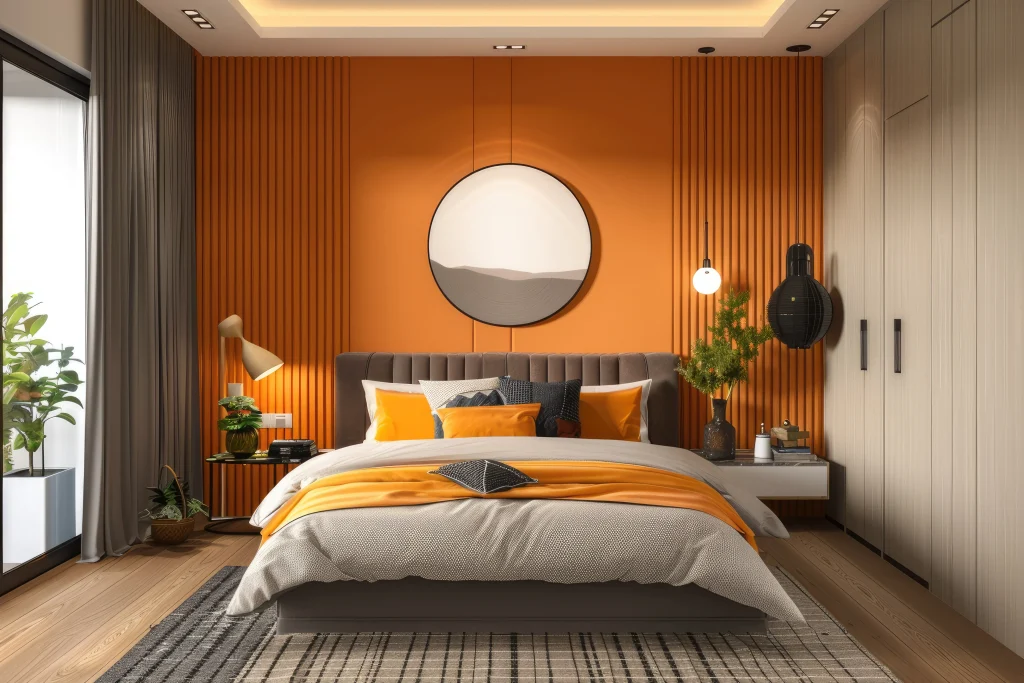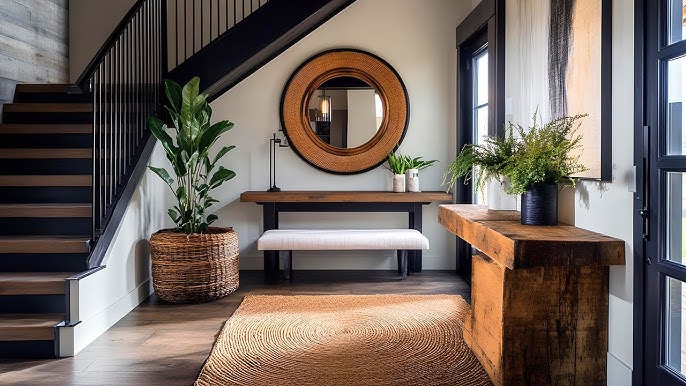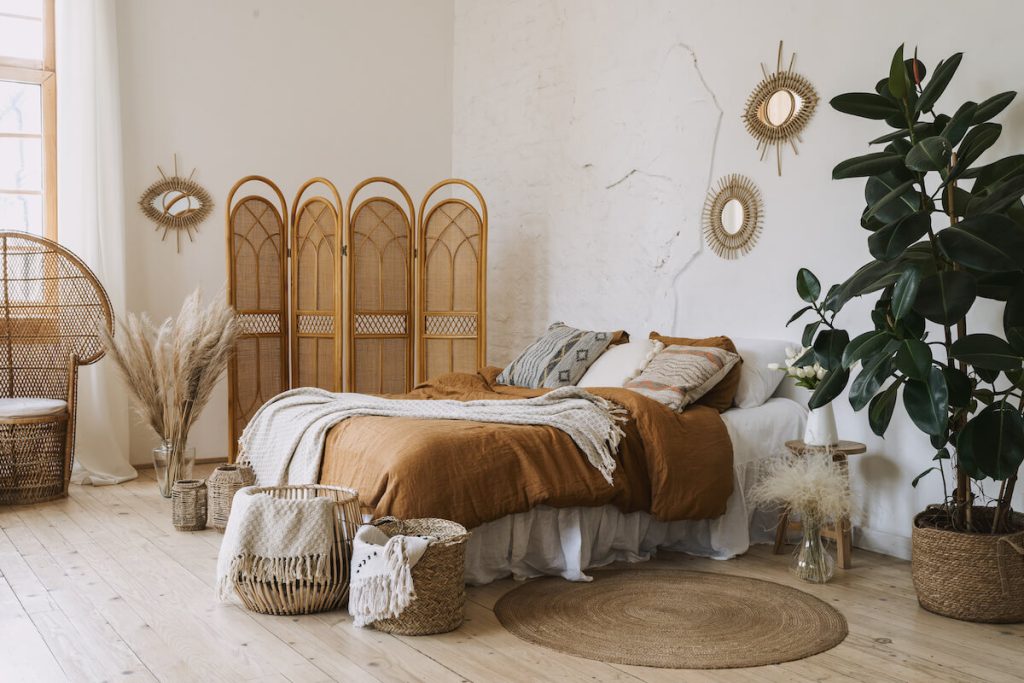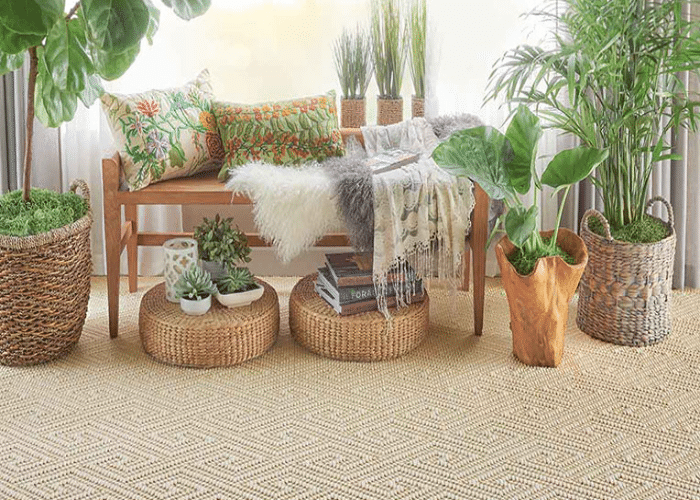In a world dominated by synthetic materials and mass-produced home decor, there’s a growing desire to bring natural elements into our living spaces. Decorating with natural materials not only adds warmth and texture to your home but also creates a calming, eco-friendly environment that connects you with the outdoors. From wood and stone to plants and textiles, incorporating natural elements can transform any room into a welcoming sanctuary. Here’s how to decorate with natural materials effectively.
1. Embrace Wooden Accents

Wood is one of the most versatile natural materials in home decor. Its warmth and texture instantly add character to any room. Whether it’s through furniture, flooring, or decorative objects, wooden elements create a timeless aesthetic. Opt for reclaimed or sustainably sourced wood for an eco-friendly approach. Wooden coffee tables, shelving, or sideboards can serve as statement pieces, while small accents like picture frames, bowls, or candle holders add subtle charm. Mixing different wood tones can create a layered, rustic look, but be mindful of balancing light and dark shades for visual harmony.
2. Incorporate Stone Elements
Stone brings a sense of permanence and natural beauty into interiors. Granite, marble, limestone, or even river stones can be used in multiple ways, from countertops and flooring to decorative vases and planters. A stone accent wall or a marble-topped table can elevate a space, giving it a sophisticated yet organic feel. For a more subtle approach, consider using pebbles or small rocks in indoor plant arrangements, terrariums, or decorative bowls. The key is to highlight the material’s natural patterns and textures rather than covering them up.
3. Use Natural Fabrics

Textiles made from natural fibers such as cotton, linen, jute, hemp, or wool bring softness and comfort while remaining eco-conscious. Linen curtains, cotton throw blankets, or wool rugs can create a cozy, inviting atmosphere. Jute and hemp are excellent for rugs, baskets, and wall hangings, offering both durability and texture. Natural fabrics often have imperfections that add character, making your space feel unique and personal. Choose neutral or earthy tones to enhance the organic feel or mix in muted colors inspired by nature for a subtle pop.
4. Introduce Greenery
Plants are perhaps the most vibrant natural element you can add to your home. They not only purify the air but also create a sense of tranquility and connection to nature. Large leafy plants, hanging planters, or small potted succulents can be strategically placed to enhance different areas of a room. Consider using natural containers like clay pots, woven baskets, or stone planters to complement the overall decor theme. Indoor plants also pair beautifully with wooden and stone accents, creating a cohesive, nature-inspired design.
5. Incorporate Natural Lighting
Natural materials and lighting go hand in hand. Whenever possible, maximize natural light to highlight the beauty of wood, stone, and textiles. Use sheer curtains to let sunlight filter through, enhancing the colors and textures of your decor. Mirrors with wooden or stone frames can reflect light while doubling as decorative elements. Consider skylights, large windows, or glass doors that connect the interior with the outdoors. Light interacting with natural surfaces creates warmth, depth, and an inviting atmosphere.
6. Add Organic Decorative Elements

Beyond furniture and textiles, small decorative pieces made from natural materials can enhance the aesthetic of any room. Consider driftwood sculptures, woven baskets, clay vases, or stone figurines. Handmade items often carry a story and uniqueness, offering authenticity that mass-produced objects cannot replicate. Incorporating these pieces strategically—on shelves, mantels, or as table centerpieces—brings subtle texture and interest to your home.
7. Maintain Balance and Simplicity
While natural materials offer beauty and texture, it’s important not to overwhelm your space. Balance is key. Too many contrasting natural elements can feel chaotic, while a well-curated selection creates harmony. Mix textures thoughtfully—pair a soft linen sofa with a wooden coffee table and a stone accent piece. Keep color palettes neutral and grounded, with greens, browns, creams, and soft earthy tones dominating. Minimalism often works best with natural decor, allowing each material to shine without competing for attention.
Conclusion
Decorating with natural materials is about more than aesthetics; it’s a lifestyle choice that encourages sustainability, mindfulness, and connection to nature. By incorporating wood, stone, natural fabrics, plants, and organic accents thoughtfully, you can create spaces that feel warm, inviting, and timeless. Whether you prefer a modern minimalist look or a rustic cozy vibe, natural materials provide endless possibilities to design a home that nurtures both the senses and the soul. Start small, experiment with textures, and embrace the imperfections that make natural materials truly beautiful.


